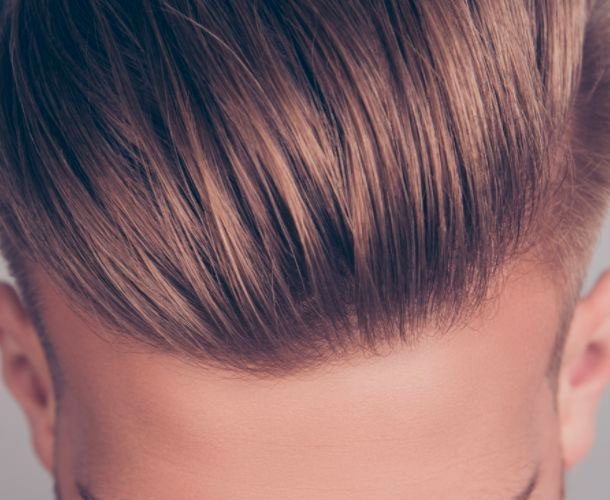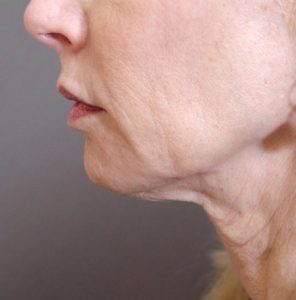News

How To Tighten Sagging Jowls
Share this articleIn this article, we delve into effective methods to tighten sagging jowls and restore a more youthful appearance to your face.
If you’re looking to address sagging jowls and rejuvenate your facial contour, we’re here to help. Explore the following tips and techniques that can help tighten and lift sagging jowls, giving you a more defined and rejuvenated look.
If you are looking for a free consultation on how to address sagging jowls, we’re here to help. Schedule a complimentary consultation or seek additional advice by contacting us today. Call us on 0162 532 4244 or use our Contact Form.
Sagging jowls are a common concern for many of us as we age.
A loss of elasticity in the jowls being a problem that can impact anyone, regardless of how much they exercise and how healthy their diet.
This, though, does not mean that it simply has to be lived with. There are a range of options for treating sagging jowls, these covering a full spectrum from quick exercises to cosmetic surgery. Some options are likely to be more effective than others.
In this post, we quickly look at what jowls are and why they sag, then we look at steps to help prevent them sag and what can be done to remedy the condition as required.
What Are Jowls
Jowls is a term commonly used to describe the skin below the chin and jawline – specifically sagging skin.
It is skin that appears baggy or loose, skin that has lost elasticity and so definition.
While jowls are not a medical concern, they are not harmful of themselves, the appearance can be distressing or impact self-esteem and confidence.
Everyone is liable to getting jowls to some extent as they age, but the impact will vary, so too the time of life jowls first become apparent.
Why do we get jowls
There are a number of causes for jowls, some within our control to an extent, others we cannot influence.
The main cause is simple age and genetics – two factors that, sadly, we cannot do much about.
As we age, the skin in the cheeks and below the jawline is prone to losing the collagen and elastin that are naturally produced. Both of these proteins work to create elasticity in the skin, connecting it to tissue and helping it spring back into shape as we move.
Our jowls become apparent as this elasticity is lost – with collagen and elastic depleted there is less to fight against gravity and so the skin sags – i.e drops.
Tied into this are our genetics, some people will suffer from collagen and elastin depletion earlier than others, indeed it can be as early as the teens. For others, it will not be until decades later, even into old age.
Other factors are inside our control, though it is worth noting that in many cases the impact of genetics will override these – we could live a perfect lifestyle yet still have prominent jowls simply because of our genetic makeup.
The following all have the potential to make prominent jowls more likely:
– Smoking. As with so many other conditions, smoking has a negative impact. Smoking causes blood vessels to narrow and makes it harder for the body to circulate nutrients. Collagen and elastin production can also be impacted.
- High levels of exposure to the sun. Specifically, the ultraviolet rays can lead to reduced collagen creation.
- Weight loss, especially crash diets. As we gain weight, the skin stretches, losing this weight can then create a problem whereby there is excess skin, this inevitably sagging.
There are other minor factors, for instance some claim that a large amount of screen time can lead to prominent jowls – this because of the tendency to look down, rather than being linked specifically to the technology.
Quick Fix For Sagging Jowls
Naturally, many seek a quick, easy – and free – fix for their sagging jowls.
The first tip is to address factors that can create sagging jowls – quit or cut back on smoking, reduce exposure to the sun’s UV rays (especially when not protected by a quality sun block).
This will not eradicate jowls but it may help to prevent them worsening.
There are exercises you can try, though it is worth noting that there is no formal evidence that any exercise can specifically reduce the appearance of jowls.
However, there are some advocates for the following:
Chin exercise
Close your mouth and then jut your lower jaw out and, simultaneously, raise your lower lip (maybe do this when nobody is looking).
Hold the position for a few seconds and then repeat around 20 times – and then repeat the whole process.
The aim is to exercise the jaw and so define muscle in this region.
Neck exercise
With your head level, keep everything still apart from your neck and move the neck fully back and then forward. With your head still level, your jaw should jut out as you go forward.
We have not put much focus on exercise as, while they might strengthen some muscles, they are not targeting or removing loose skin.
Other Quick Fixes
There are other options which avoid the need to see a medical professional, clinic or surgery.
One is to simply hide the jowls through the wearing of a scarf or jumper that covers the neck, this more of an option for winter than on the beach.
Make-up can help, a skillful application to make the jowls less noticeable. Obviously, this does not actually reduce the jowls and any effect will be limited to the timeframe in which the make-up remains applied.
There will be a need to reapply makeup and for this to be an ongoing solution it is likely to be time consuming. However, for a one-off occasion, it could boost confidence and go some way towards hiding the appearance of sagging jowls.
Cosmetic Surgery
At the opposite end of the scale, there is cosmetic surgery.
This is an option that will remove the jowls and can have a profound impact on appearance, and with this self-esteem.
Any thoughts of having surgery should always begin with a detailed consultation with a reputable surgeon, they would be able to assess the benefits of surgery and suggest the available options.
Liposuction would be one possibility, this the process of using a cannula to remove fat from the chin and neck area. The area would be reshaped to help prevent future sagging.
Liposuction is a procedure that will cost thousands of pounds and is also invasive and so takes time to recover from. Bruising and swelling would be expected post surgery – and surgery itself is under general anaesthetic – and some time off work to recover would be typical.
Another surgical procedure to consider would be a neck lift – potentially in conjunction with a full face lift.
Similar to liposuction, fat is removed and then muscles tightened and the remaining skin sewn into a more favourable position. There will be an incision, this typically close to the ears and made as discreet as possible.
A neck lift is likely to cost more than liposuction.
It would be up to a surgeon to advise as to the best option in any particular case and answer queries.
Non-Surgical procedures
A middle ground, and one chosen by many is to opt for non-surgical procedures.
The benefit of these options is that they are quicker and cost less than a full surgical procedure and yet still have a visible impact.
With a non-surgical procedure you can also still go about your usual daily business, there is not the same requirement for time off work or lengthy time to recover.
Dermal fillers are a popular option, these use an injection of hyaluronic gel to stimulate collagen and elastin creation, thus rectifying the loss of these natural proteins.
A skilled practitioner can use a quantity that makes a profound difference, and by injecting into multiple layers of the skin, results can be relatively long lasting – often lasting up to two years.
There are many who offer dermal fillers to clients so it is always worth checking the reputation of anyone you consider.
Another option is Ultherapy, this an FDA-approved skin restoration treatment for concerns such as sagging jowls. It is a treatment used by Jennifer Aniston, Gwyneth Paltrow and Kim Kardashian, among others and yet costs from £400.
Ultherapy simply uses ultrasound and there are no incisions or injections making it truly non invasive. The process works by gently heating the skin in a targeted manner to stimuli collagen creation.
It is a truly groundbreaking procedure that produces results inside days.
A similar treatment is Ultracel which uses both ultrasound and radio frequency.
Laser skin tightening might be suitable, this uses heat to stimulate collaged and elastic fibre production in deep layers of the skin. Modern laser treatments are far better at targeting deeper layers, without removing the surface layer – this leads to a fresh new layer of skin developing, but without the risk of scarring.
We looked at how laser skin tightening works in a recent post (LINK).
As with full surgical options, it can be confusing trying to work out which option would be the best for you.
ABOUT DR NYLA
Dr Nyla is one of the leading cosmetic dermatologists in the UK – she is trusted by many high-profile clients and her expertise makes her someone that media publications regularly seek an opinion from.
Her cosmetic clinic is the largest outside London and also the only Diamond Clinic outside the capital.
Dr Nyla’s clinic won Top Cosmetic Clinic Award in the UK for 2019.
Her testimonials are universally positive and her reviews on the independent TrustPilot site outstanding.
If you would like to arrange a consultation, or simply want further advice please contact us today. Call us on 01625 523 307 or use the Contact Form.




